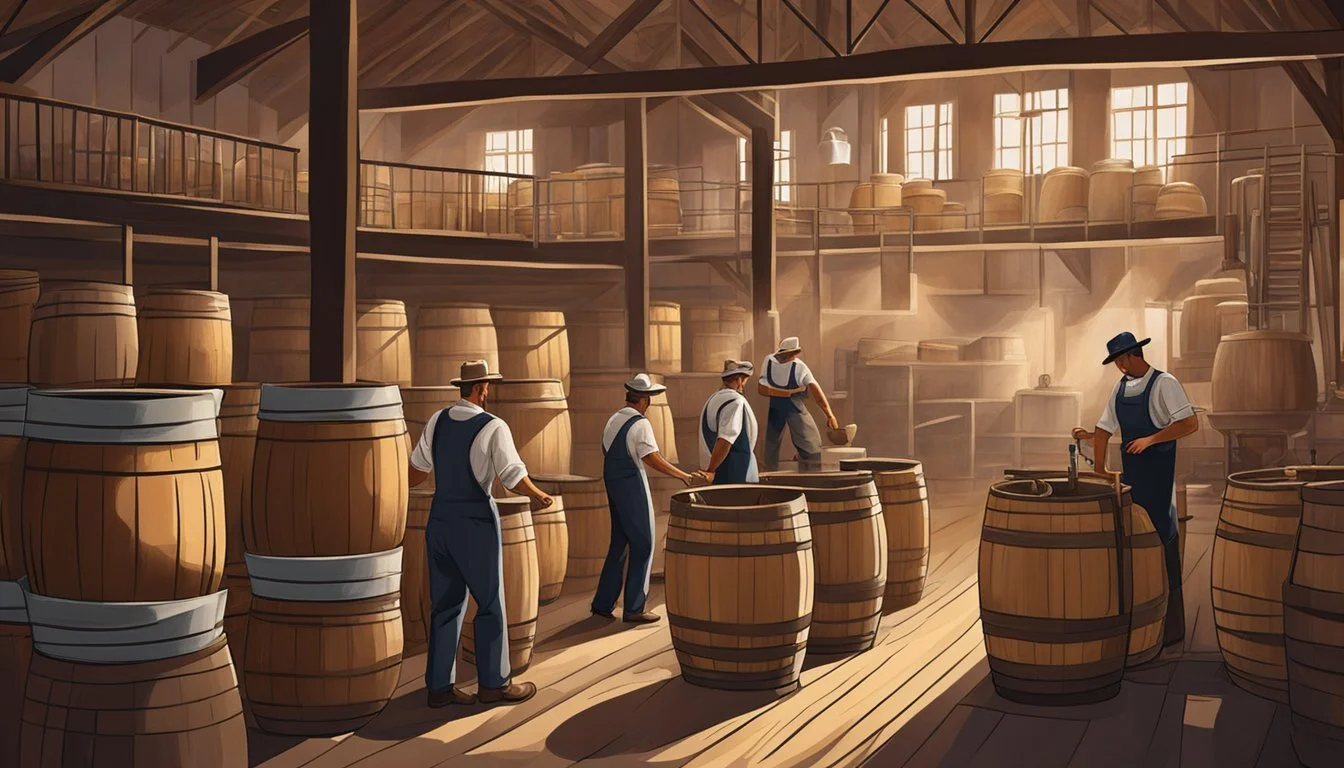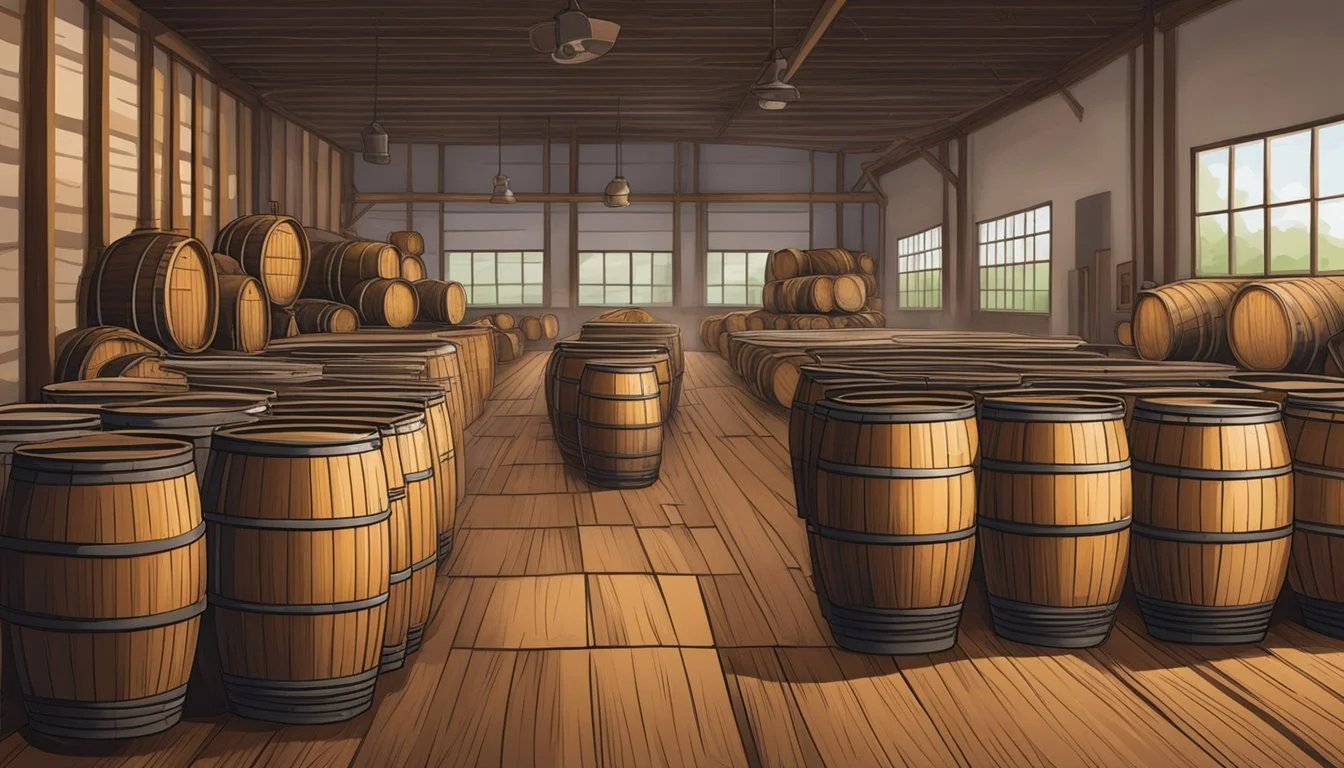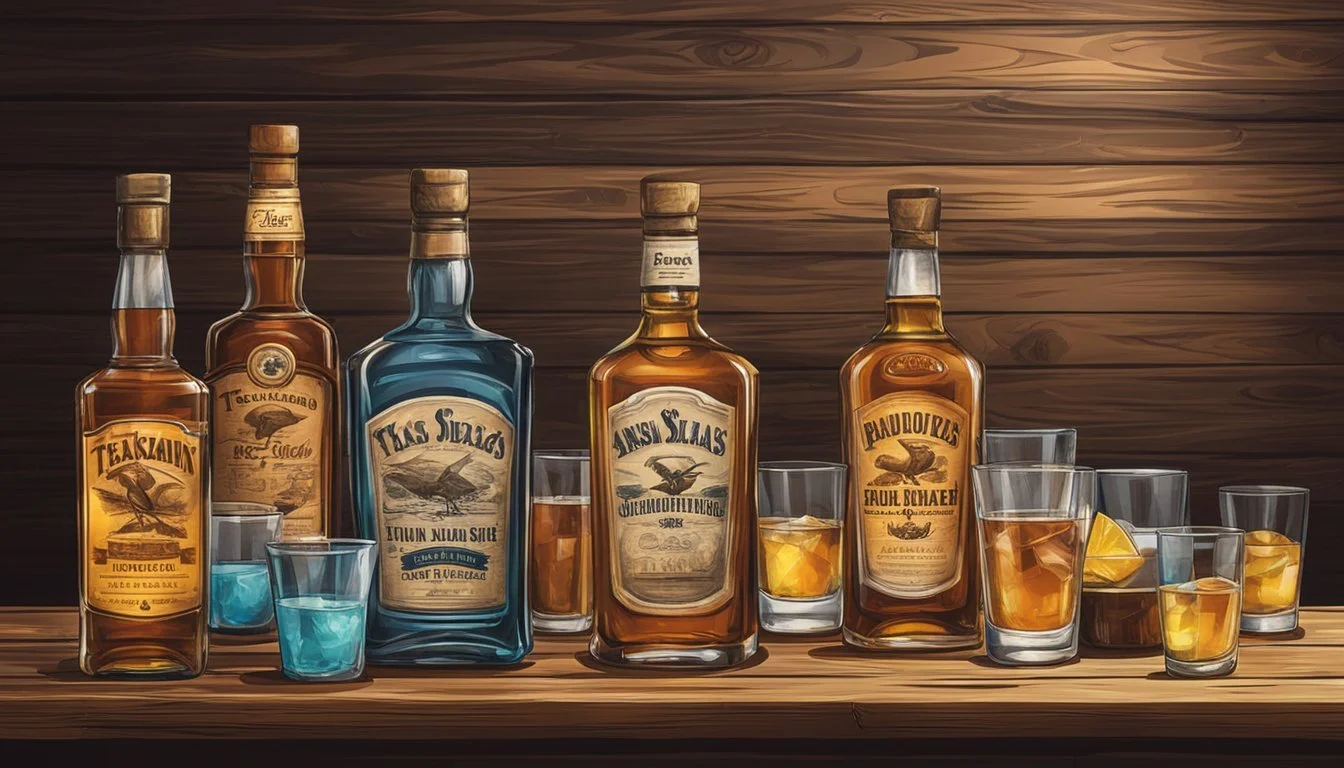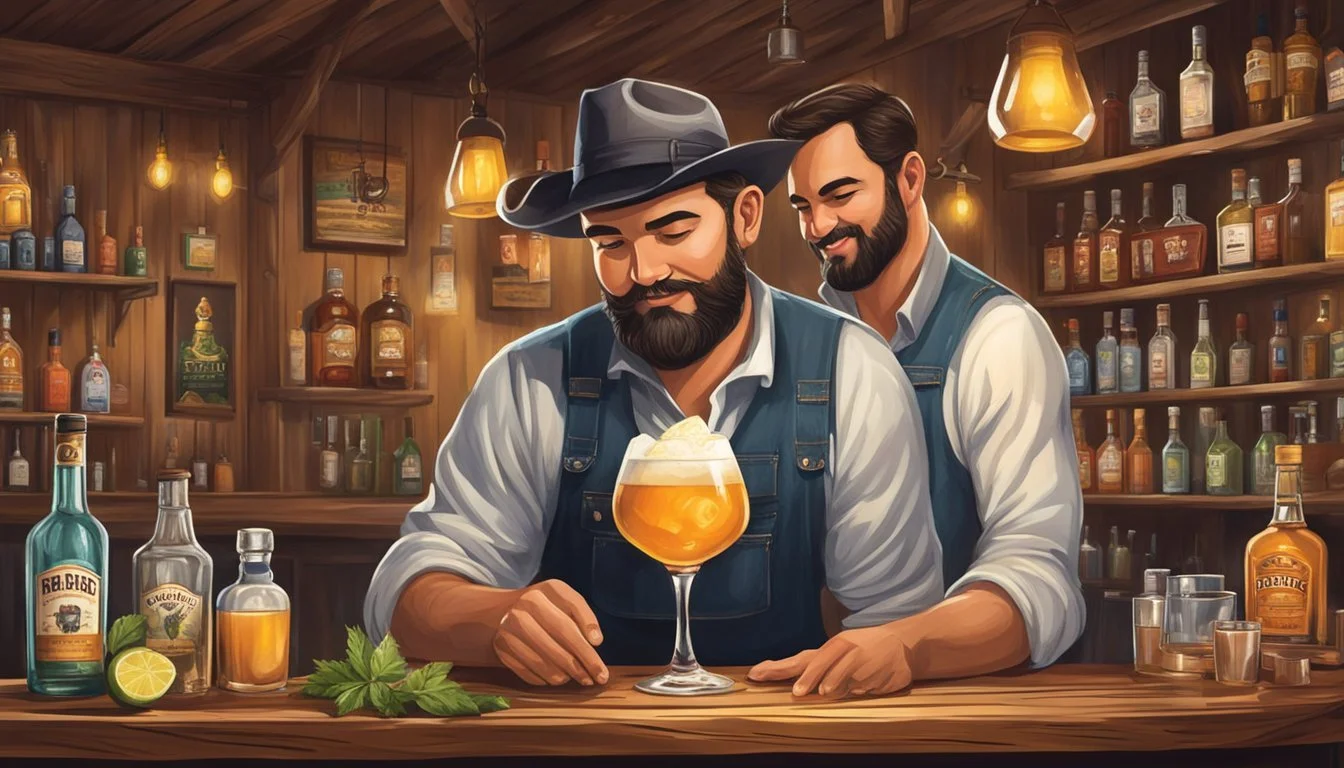Exploring the Rum Scene in Texas
A Guide to Local Distilleries and Bars
The rum scene in Texas is as rich and varied as the state itself, reflecting a growing interest in craft distillation and locally sourced ingredients. Distilleries across the Lone Star State are producing rum that captures the unique flavors and spirit of the region. Visitors and locals alike can explore an array of distilleries that offer tours and tastings, providing an intimate look into the art of rum-making.
Texas hosts a variety of events that celebrate rum, such as the Texas Rum Fest in Dallas. These gatherings provide enthusiasts with the opportunity to sample a wide range of rums, learn about the distillation process, and engage with the history and culture surrounding this spirited beverage. With an emphasis on craftsmanship and innovation, Texas distillers are creating rums that are gaining recognition and respect on both a national and international stage.
Bolstered by a sense of community and collaboration, the rum distilleries of Texas often share a commitment to sustainability and a passion for quality. This dedication is evident in the experiences offered at places like Cypress Creek Reserve in Wimberley, where the visitor engagement extends beyond tastings to include a deeper understanding of the production process. The emerging rum scene in Texas invites connoisseurs and curious onlookers alike to discover the depth and diversity of rum in the heart of the South.
History of Rum in Texas
Rum's presence in Texas dates back to when Spanish colonists first brought it from the Caribbean in the 16th century. Over the centuries, it gained popularity and became intricately linked with the state's history and culture.
Prohibition Era
During the Prohibition era in the early 20th century, Texas, like the rest of the United States, faced a ban on alcoholic beverages. This legislation impacted the rum trade significantly and prompted a surge of illicit operations throughout the Lone Star State. Rum on the Run in Texas offers a narrative of how the prohibition affected the state's societal norms and economy, curtailing a once-thriving industry.
Revival and Renaissance
Following the repeal of Prohibition, Texas' rum scene experienced a gradual resurgence. The turn of the 21st century saw a marked renaissance with the advent of craft distilleries. Balcones Distilling emerged as a notable player in this new wave of rum production, spearheading a movement that emphasizes quality and local distinction. Texas' rum scene now celebrates a variety of craft distilleries, each contributing to a diverse and vibrant rum culture within the state.
Rum Production Process
The journey of rum production in Texas encompasses traditional methods combined with local innovation. This process is critical in defining the distinctive flavors of Texan rum, from its beginnings as sugarcane to its maturation into a fine spirit.
From Sugarcane to Spirit
Rum begins with sugarcane—either its juice or byproducts like molasses, which is the most common base in rum production. In Texas, the high-quality molasses is carefully fermented, a stage where yeast converts the sugars into alcohol, setting the foundation for rum's flavor profile.
Ageing and Maturation
The ageing process is crucial to the development of rum's complexity. Texan rums are aged in a variety of barrels, including traditional oak and innovative options like white port barrels. This stage can last from a few months to several years, with the environment contributing to the rum's color, flavor, and overall character.
Distillation Techniques
Texas distillers employ both traditional distilling methods and modern techniques. The use of column stills enables the production of high-proof spirits, sometimes up to 95% ABV, while pot still distillation typically yields a rum with a lower proof but richer in flavor. Distillation is a blend of art and science, significantly influencing the final taste of the rum.
Major Rum Distilleries in Texas
Texas is home to a burgeoning rum scene, with distilleries across the state crafting unique spirits. The following establishments are recognized for their exceptional quality and contribution to the Texas rum landscape.
Balcones Distilling
Located in the heart of Texas Hill Country, Balcones Distilling is renowned for its innovation and dedication to crafting extraordinary spirits. Despite being more famous for their whiskies, Balcones has entered the rum space with the same level of commitment to quality.
Garrison Brothers Distillery
Garrison Brothers Distillery, situated in the serene landscape of Hill Country, has earned a reputation for being a trailblazer in Texas spirits. While primarily recognized for producing premium bourbon, their foray into rum distillation is watched with great interest by enthusiasts.
Treaty Oak Distilling
In the rustic setting of Dripping Springs, Treaty Oak Distilling stands out for its diverse range of spirits including rum. Their rum offerings underscore a commitment to tradition and innovation that reflects in the distinct flavors and high quality.
Still Austin Whiskey Co.
Still Austin Whiskey Co., nestled in Austin, Texas, may be famous for its whiskey, but it has also made waves with its rum. This distillery combines traditional techniques with sustainable practices to create rum that captures the essence of the Lone Star State.
Rum Tasting Experience
Rum tasting in Texas offers enthusiasts a rich tapestry of flavors and aromas, backed by a robust schedule of events that cater to both neophytes and connoisseurs. Participating in these tastings and events equips aficionados with a deeper appreciation for the subtleties of rum.
Understanding Flavors and Aromas
When sipping rum, participants engage with a complex profile of notes ranging from sweet to earthy. Key flavors to identify include vanilla, dark chocolate, toffee, and caramel. These flavors are often highlighted in the spirit's profile, resulting from the intricate distillation process and the aging in barrels. Sensory evaluation during a tasting typically follows this sequence:
Visual Inspection: Observing the rum's color and viscosity.
Nose: Smelling the rum to identify the primary aromas.
Palate: Sipping the rum to discern the flavors on the tongue.
Finish: Recognizing the aftertaste and flavors that linger.
Identifying these flavors accurately requires practice and a keen sensory awareness.
Tasting Events and Tours
Texas hosts a variety of rum tasting events, such as the Texas Rum Fest, which present an opportunity for individuals to deepen their understanding of rum. These events often include:
Intro to Rum Experience: A comprehensive guide for beginners
Grand Tasting Sessions: Where rum aficionados try different rums
For a more personalized approach, a private tour at a distillery offers an intimate look into the rum-making process. These tours often allow visitors to sample rums directly from the casks, providing insight into how aging impacts flavor. Texas distilleries are known for their hospitality and the immersive educational experiences they provide.
Rum Varietals and Styles
The Texas rum scene offers a diverse palette of rum varietals and styles, each marked by distinct flavors and aging processes. This ranges from lighter rums that showcase subtlety and freshness to the full-bodied profiles of darker varieties.
Dark Rum
Dark rums, revered for their robust flavor, incorporate the essences of charred barrels during their maturation. These rums often carry hints of chocolate, chestnut, and a complex mix of spices. A notable characteristic of dark rum is its rich color, which it acquires from both extended aging and the addition of caramel or molasses. High-quality dark rums may display notes of raisins, further adding to their depth in flavor profiles.
Aging Variations
The aging process is pivotal in defining the character of Texas rums. Rums can be aged in barrels for varying durations, resulting in a spectrum that ranges from light to very dark. Maturation plays a crucial role, as it not only contributes to the color but also enhances the flavor complexity. Some Texas distilleries utilize a technique involving charcoal, which serves to filter the spirit and impart a smoother profile. The variety of aging methods and durations used by Texan distillers allows them to create a wide array of rums that cater to an assortment of palates.
The Influence of Climate on Texas Rum
The climate of Texas plays a significant role in the production of rum. With varying climates across the state, ranging from arid in the west to humid and subtropical in the east, the environment affects both the raw materials and the aging process of rum.
Grain and Molasses: Central to rum production is molasses, a byproduct of sugarcane, which is profoundly affected by Texas's warm climate encouraging vigorous growth of the sugarcane crops. Additionally, grains like corn, used in some rum mash recipes, flourish in Texas's long growing season, contributing nuanced flavors to the spirit.
Temperature and Aging: Texas's heat accelerates the aging process of rum. Barrel aging in a warm climate significantly affects the interaction between the spirit and the wood, imparting flavors more quickly and resulting in a unique profile that is harder to replicate in cooler regions.
Rum Variations Across Texas:
East Texas: The humidity promotes a different aging dynamic, possibly leading to a smoother rum blend.
West Texas: The aridity may enhance the evaporation rate during aging, potentially intensifying the flavors.
In regions such as the Texas Hill Country, local distilleries leverage the climate to create distinct rums that stand out in the market. Understanding Texas's diverse climate is essential for appreciating the unique character of Texas rum, with each bottle carrying the signature of its climate-driven terroir.
Crafting Cocktails with Texas Rum
In the vibrant landscape of Texas spirits, rum commands a unique presence, often driving creativity and innovation in the region's cocktail scene.
Popular Rum Cocktails
Texas rum distilleries continue to shape the state's drink culture, offering a taste of both traditional and modern twists on rum cocktails. Notable among them is the Spirit of Texas, a cocktail that fuses Texas-distilled rum with citrus flavors and local sweeteners like honey garlic ginger syrup. Another staple is the refreshing Texas Hurricane, an ebullient blend of coconut rum, spiced rum, and fruit juices, served over crushed ice with a splash of grenadine for a sunset hue.
Spirit of Texas Cocktail
Texas Rum
Fresh Lime Juice
Honey Garlic Ginger Syrup
Topo Chico Mineral Water
Texas Hurricane
Coconut Rum
Spiced Rum
Orange Juice
Grenadine
Pineapple Juice
These drinks symbolize the harmony of flavors cherished in the Lone Star State's rum cocktails, capturing the essence of its rich and diverse culture.
Innovative Mixology
Pushing the boundaries further, Texas mixologists are infusing craft beer and other unexpected ingredients into their rum concoctions, to great acclaim. The use of craft beer not only provides unique tastes but also underscores the collaborative synergy between local breweries and distilleries.
Adventurous bartenders utilize a wide array of ingredients like simple syrup infused with local Texan herbs and spices to amplify the profile of their creations. The innovation doesn't stop there, as these culinary artists regularly explore and incorporate new techniques and elements into their rum cocktails, embracing the spirit of modern mixology with open arms and shakers at the ready.
Innovative Texas Rum Cocktail (Example)
Texas Rum
Local Craft Beer Reduction
Spiced Simple Syrup
Fresh Citrus Juice
Each carefully crafted cocktail serves not just a drink, but a narrative of the creativity that Texans pour into their love for mixology.
Culture and Community
The rum scene in Texas is a vibrant blend of events and local support, reflecting the spirit and diversity of Texan culture. Distilleries and rum enthusiasts alike foster a community centered around this storied spirit.
Rum Events in Texas
Texas has become a notable hub for rum events, ranging from educational experiences to festive celebrations. One such event is the Texas Rum Fest, which not only showcases a variety of rums but also provides attendees with opportunities to learn about the history and production of rum. These events are often accompanied by lively music and are a testament to the Texans' enthusiasm for crafting and enjoying rum-based cocktails.
Highlighted Events:
Texas Rum Fest in Dallas
Local tasting events at distilleries
Cocktail workshops and rum pairing dinners
Local Support for Distilleries
Texans are known for their strong community spirit, and it extends to their support of local rum distilleries. Distilleries throughout the state boast a supportive environment that fosters the growth of rum culture. Patrons frequently visit these establishments to gain insight into the crafting process and to enjoy the local flavors that Texas rum has to offer.
Examples of Local Support:
Patronizing craft rum distilleries
Engaging in educational tours
Supporting distilleries at farmers' markets and local events
The interconnectedness of events and distillery support ensures that the community and culture around rum in Texas remain robust and continue to thrive.
Collaborations and Cross-Industry Relations
The Texan rum scene is distinguished by its collaborative spirit, with local distillers often teaming up with breweries, wineries, and restaurants to create unique offerings that showcase the versatility of rum.
With Local Breweries and Wineries
Texas rum distilleries expand their reach and creativity by forging partnerships with local breweries and wineries. These collaborations typically result in innovative products that may include rum barrel-aged beers or rum-infused wines. For example, a craft rum producer might team up with a local craft beer brewery to age a stout in rum barrels, imparting complex notes of vanilla and caramel to the beer. Similarly, working with wineries can result in rum casks being used to age wines, creating bold flavors that appeal to connoisseurs of both wine and spirits. This fusion not only merges diverse palates but also illustrates a commitment to community and local industry support.
Product Collaborations:
Rum barrel-aged Stout
Rum-infused Red Wine
Restaurant Partnerships
Texan restaurants eagerly collaborate with rum producers to deliver culinary experiences that are enhanced by bespoke rum pairings. Such partnerships might lead to special menus where dishes are designed to complement the nuanced flavors of locally produced rum, or even exclusive rum-based cocktails crafted specifically for the restaurant's guests. Engagements between rum distilleries and restaurants highlight the adaptable nature of rum, from sipping varieties that can stand alongside bourbons and whiskies to flavorful variants that enrich a diverse range of cuisines.
Highlights:
Specialty Cocktails: Tailored rum cocktails exclusive to partner restaurants.
Paired Menus: Dishes curated to match with specific rum profiles, potentially elevating both the dining experience and the appreciation for craft rum.
Texas in the American Spirits Landscape
Texas has garnered attention for its contribution to the American spirits industry, particularly through its ventures into bourbon, whiskey, and craft spirits. Distillers in the Lone Star State have been experimenting with and perfecting various styles, putting Texas on the map as a notable player in the spirits scene.
Comparison with Bourbon and Whiskey
In the United States, bourbon and whiskey are celebrated heritage spirits, often associated with regions like Kentucky and Tennessee. Texas, however, has entered this arena with its unique climate influencing the aging process. Texas bourbon and whiskey distillers have embraced the state's variable weather to accelerate the maturation of these spirits, resulting in robust flavors. Texas offers visitors a chance to witness this innovation at places like the Garrison Brothers Distillery in Hye, the state's first legal whiskey distillery since 2006.
Texas Bourbon and Whiskey Notables:
Still Austin Whiskey Co. in Austin: Recognized for sustainable practices and high-quality whiskey.
Garrison Brothers: Known for their flagship Cowboy Bourbon, a testament to nearly two decades of distilling excellence.
Craft Spirits Movement
The craft spirits movement in Texas reflects a burgeoning interest in small-batch and artisanal production. This shift towards craft spirits has seen an increase in local distilleries producing everything from single malts to rum, with the latter gaining its own following and the advent of events such as the Texas Rum Fest in Dallas. The movement is characterized by a focus on quality, innovation, and local sourcing, with distilleries like the Distillery at Kiepersol in East Texas crafting spirits that echo the state's diverse cultural and agricultural tapestry.
Texas Craft Spirits Highlights:
Craft Distilleries: Small-batch producers with a focus on local ingredients and distinctive spirits.
Innovation: Texas distillers are redefining traditional spirits with local flair.
Texas Rum Fest: An event celebrating the history and craft of rum, indicative of the state's enthusiasm for craft spirits.
Texas Rum Beyond Borders
With a distinctive presence in the rum market, Texas rum is gaining international influence and national recognition, proudly carrying the Lone Star State signature beyond its borders and showcasing its qualities on the world stage.
International Influence
Texas rum, while firmly rooted in the traditions of the Lone Star State, has felt the influence of storied rum cultures such as those from Jamaica and Cuba. This multicultural touch is evidenced in products from distilleries like Island Getaway Rum, which is one of the few female Hispanic-owned rum brands in Texas. Bringing together the rich history of rum and the diverse cultural influences of the region, Texas-made rum is beginning to make its mark internationally, particularly in markets that respect the heritage of rum-making like Jamaica and Cuba.
Notable International Activities:
Trade missions with the Texas Department of Agriculture to global markets.
Inclusion of traditionally influenced flavors and distilling techniques associated with Jamaican rum and Cuban spirits.
National Recognition
Texas rums, previously overshadowed by other spirits, are now coming into their own on the national stage. A growing number of producers are gaining recognition outside of Texas, with some brands like Island Getaway Rum expanding their reach beyond the state's borders. Events such as the Texas Rum Fest have become key platforms for showcasing local rum producers to audiences from states like New York, which is known for its discerning spirit enthusiasts and influential role in beverage trends.
National Highlights:
The Texas Rum Fest, attracting rum aficionados from across the nation.
Texas' ranking as one of the top four rum markets in the United States, with consumption reaching over 1.1 million cases per year, illustrating the significant demand for rum within the state.
With continuous efforts to push the boundaries, Texas rum is not just woven into the state's fabric but is also contributing significantly to the broader rum culture both nationally and internationally.
Conclusion
The Texas rum scene is an impressive testament to the state's ability to craft spirits that resonate with history and contemporary tastes alike. Distilleries like Cypress Creek Reserve continue to anchor the local industry in Wimberley, offering a destination for enthusiasts eager to sample Texan rum. These local distilleries typically operate with hours catering to visitors, suggesting an inviting and consumer-friendly atmosphere.
Events such as the Texas Rum Fest underscore the importance of rum in the state's cultural landscape. They provide platforms for discussing the spirit's history, production, and role in society. Here, connoisseurs and novices alike gather to celebrate the rich traditions and innovative future of Texas rum.
The historical significance of rum, dating back to Prohibition-era rum running, adds a layer of intrigue and depth to the state's current production. Today's Texas rum distillers are not just creating finely crafted spirits; they are upholding a legacy that once thrived during America's dry years.
In literature and film, rum often symbolizes rebellion and adventure—themes Texans and their rum are no strangers to. The distilleries in central Texas, with their diverse offerings and focus on quality, embody this spirit by carving out a unique niche within the American spirits industry. Texas rum is more than a mere beverage; it is a vibrant part of the state's identity.













